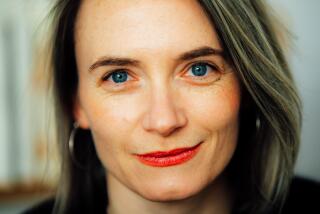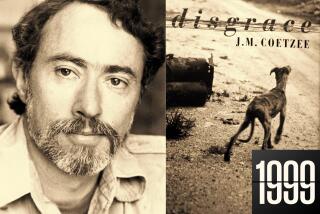Living With Gratitude : One who has faced down death can fearlessly face life, intoxicated with the brilliance of each passing moment.
The morning fog lifts as we cross San Francisco Bay and head for Pt. Reyes National Seashore, a wilderness preserve delicately yoked to the California mainland by the San Andreas fault and flanked by ridges that plunge deeply into the sea. Come the earthquake, everyone agrees, Pt. Reyes will tear away and float into the Pacific. Meanwhile, we who wander its trails enjoy its spectacular transience.
My favorite trail snakes high above the Pacific Ocean, meanders through groves of cypress and chaparral, circles freshwater lakes that feed flocks of sea gulls and climbs steeply to the top of a mountain where you are treated to a panoramic view of the California coastline, a palette of green and gray, brightened by flecks of yellow and orange wildflowers.
For 28 years I have roamed these trails. Now, having survived a second bout with cancer, I gasp at the crisp shadows created by the late-afternoon northern Californian light. High on a mountainous bluff, I succumb to the irresistible urge to look back, recall losses and count blessings. I think of my birth, just days before two atomic explosions irreversibly changed world history. As an elder of the baby boom generation, I’ve been granted the special privilege of experiencing life firsthand, before it turned into a baby boom media event.
This morning I awakened to the voices of three writers whose memoirs have taught me about living life in the face of death.
Stricken with prostate cancer, Anatole Broyard, the former editor of the New York Times Book Review, described how he became newly “intoxicated” with life. “When you learn that your life is threatened,” he wrote, “you can turn toward this knowledge or away from it. I turned toward it.”
Faced with cancer in his 80s, columnist Max Lerner wondered how a life-threatening illness might affect a middle-aged person. “When illness comes late in life, it adds a touch at once of pathos and piquancy. The pathos is that so few years remain for living with the renewed depth you have achieved. The piquancy is that you are spurred even more to rethink life, to reinvent self, to ask the embracing question: What shall I do with rest of my life?”
Battling breast cancer, the poet Audre Lorde asked, “What could we possibly be afraid of after having admitted to ourselves that we had dealt face to face with death and not embraced it? For once we accept the actual existence of our dying, who can ever have power over us again?”
Like everyone else, I’ve had my share of pain: a parent’s suicide, two bouts with life-threatening disease, the untimely deaths of friends, a few unrequited loves and more political disappointments than I care to remember. But I’ve also enjoyed good fortune: a career dedicated to teaching and writing; a past filled with extraordinary partners; a present shared with a wonderful, loving man; enduring friendships with women that track our joys and sorrows; a wanderlust sated by travel to foreign lands; endless vigils and protests that have expressed my deepest convictions; a thousand trails hiked by a scarred but sturdy body.
As the sun casts shadows across the coastal ridge, the ocean wind chills our sunburned faces. We hike back in comfortable silence, watching the sun slip behind the horizon. The sky is soon streaked with magenta-tinged fog. At home, I peer into the mirror and silently note the lines that sun and laughter have etched on my face. My legs remind me that today’s hike now feels like a long journey. I wince as I think of the day when I will be too old or too ill to hike through the wilderness. Not now, not yet.
Once threatened by death, you can live in denial and return to a comfortable gray existence in which daily fears displace the terror of death. Or, you can choose to embrace the painful reality of the human condition and as Lerner, Broyard and Lorde understood, live in a heightened state of awareness, intoxicated by life’s brilliant colors, knowing there is nothing left to fear.
For me, the choice is clear. I choose not to forget, and facing the awesome beauty of the sea and the sky, I bow my head in gratitude.
More to Read
Sign up for The Wild
We’ll help you find the best places to hike, bike and run, as well as the perfect silent spots for meditation and yoga.
You may occasionally receive promotional content from the Los Angeles Times.






